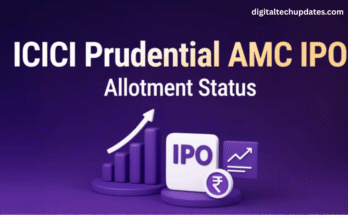Bringing conversions from your campaigns withGoogle Adscan be tricky. Bringing in leads can be even more difficult. While getting a significant amount of traffic to your website is asmart strategic marketing goal, it’s also important that the traffic you attract is relevant to your product or service, so users are more likely to convert into leads. qualified for your business. If you are starting to use Google Ads, use these helpful tips to generate more visitors than you are looking for.
1.Keyword Match
The first element to consider when trying to improve the quality of your ads in Google Ads is your choice of the type of keyword match. The buyer’s journey in Google search starts with writing a search query, which we all do when asking ourselves something, or wanting to do research on something, and the text of that query combined with the selected match type for your related keyword will help. to Google to determine if it should show your ad to the user.
Broad match words
Broad match allows your ads to show for search queries that include misspellings, synonyms, related searches, and relevant variations. Although this keyword matching option will save you time building a keyword list and generate more impressions and clicks on your landing page or website, it can also generate a large amount of irrelevant traffic and contribute to a low level of quality for your ads.
Modified broad keywords
Modified broad match gives you a better chance of increasing qualified conversions than simple broad match because it allows your ads to show only for search queries that include words designated with a plus sign (“”) or close variations of them. Close variants include misspellings, singular and plural forms, abbreviations and acronyms, and keywords (such as “real estate broker” and “real estate”). Variants do not include synonyms or related searches, as broad match does.
Phrase match keywords
Phrase match allows your ads to show up in search queries that match a phrase or close variations of that phrase, with additional words before or after. However, your ad won’t show if a word is added in the middle of the sentence or if the words in the sentence are rearranged. Phrase match is more restrictive and will not show as many impressions as broad or modified match.
Exact match keywords
Ads can show in searches that match the exact term or are close variations of that term. Close variations include a word rearrangement that does not change the meaning; the addition or removal of functional words (prepositions and conjunctions); synonyms and paraphrases; and words that have the same search intent. Exact match is the narrowest keyword type and is most likely to show the fewest impressions of all match types.
Although exact and phrase match types will generate fewer impressions and clicks because they are more specific, they will generally receive a higher click-through rate (CTR) because keywords and ads include the exact phrases that users are searching for. Therefore, they have the potential to attract more relevant users to your site, leading to more qualified conversions.
If your campaign has more than one objective, such as traffic to your website and lead generation, Google suggests the option of combining two or more keyword match types to run an effective ad campaign. In this case, you can use the modified broad match type and phrase match type to reach a wider audience, while limiting who will see your ad.
2.Negative keywords.
Negative keywords help remove unwanted and irrelevant traffic to your landing page or website. Negative keywords prevent your ads from showing for search queries with the specific terms you select. For example, if you are running a life insurance services campaign, you may want to add negative keywords like “car insurance” and “home insurance” because they are close variants of what you offer but do not represent something you actually provide. . So if a user types in “auto insurance” and it doesn’t appear as a negative keyword in the campaign, irrelevant traffic will be directed to the landing page or website, which can lead to unqualified conversions.
You will need to be careful that your negative keywords don’t conflict with any of your existing keywords. Depending on the type of match chosen, negative keywords could prevent your ad from showing if one of the negative keywords is very similar to the keyword you are bidding on. For example, if you don’t offer life insuranceI finish itand add that phrase as a negative phrase match, your ad may not show for the keyword, “life insurance.” However, it just adds “finished”As a negative keyword. It will still allow the ad to show up as “life insurance.” Another thing to keep in mind is to make sure you don’t overdo it. If you enter too many negative keywords, your ads can reach too few users.
3.Ad Copy
Ad copy also plays an important role in generating more qualified leads. Placing specific keywords in your ad copy better targets your ad to relevant users’ search queries. Not only does this improve CTR, but it also helps increase the Quality Score of your ad, which benefits your entire campaign by producing a lower cost per click (CPC) and higher ad ranking. When a user sees that an ad matches what they typed on Google, they are more inclined to click on that ad and are more likely to become a qualified candidate.
Responsive Search Ads
Responsive search ads will make you responsive to create an ad that is tailored to display more relevant messages to your audience. You can enter up to 15 headlines and 4 descriptions when creating a responsive search ad, and Google Ads will automatically test different combinations and learn which combinations work best for different users’ search queries. This can help you improve your CTR, the relevance of your traffic, and your overall campaign performance by matching your ad content to user search terms. Another benefit of responsive search ads is that by using more headlines and descriptions, your ad has the potential to reach more users by competing in more auctions and matching more search queries.
Dynamic search ads
Dynamic Search Ads are the easiest way to find qualified users who are looking for exactly what you have to offer. These types of ads are ideal for advertisers with well-developed websites or large inventories because Google crawls your website and directs users to the web pages that best match their search queries. Dynamic Search Ads also allow frequent and automatic updates to your ads when you make changes to the web page, such as adding new products or services. Users who click on your ads and go to the exact product or service pages they are looking for are more likely to be qualified leads for your business.
4.Copy of the landing page.
Whether you direct users to your website or landing page,the copy on your page must be attractive and relevant to the user’s search query. Let’s go back to the life insurance example. If your keywords and ads are about life insurance, then your landing page should be about life insurance. As mentioned above, if keyword match types and negative keywords are applied incorrectly, many irrelevant users looking for other types of insurance, such as auto insurance or home insurance, may end up on the page of destiny. If the landing page does not specifically talk about life insurance, users can get confused and convert to the landing page even if they are looking for a different type of insurance than what is offered.
5.Form
If you’re using a form as your conversion point, there are some form fields that you could apply to improve lead quality. Generally, website visitors don’t like to fill in a large amount of contact information, especially those who are shopping. By adding more fields to your form, you can get more information from your potential customers and also filter out visitors who are not serious about purchasing your products or services. For example, you can add a field that asks “What service are you looking for?” And provide a drop-down list of the types of services you offer. Also, if you are a B2B company, add form fields like company name,
6.Themes and Placements on the Display Network
Many advertisersrun display campaignsto complement their search campaigns, which is an excellent strategy. However, what some advertisers don’t know is that Google doesn’t always place their graphics on relevant websites. Most of the time, Google places its ads on random websites, YouTube channels, or apps that don’t match the offered products or services. By managing your placements and themes, you can choose where you want your ad to show instead of leaving it entirely up to Google. This helps your campaign target the most relevant users.
To receive better qualified leads, the traffic you are bringing needs to be relevant not only to your product or service, but also to the user’s search query.




